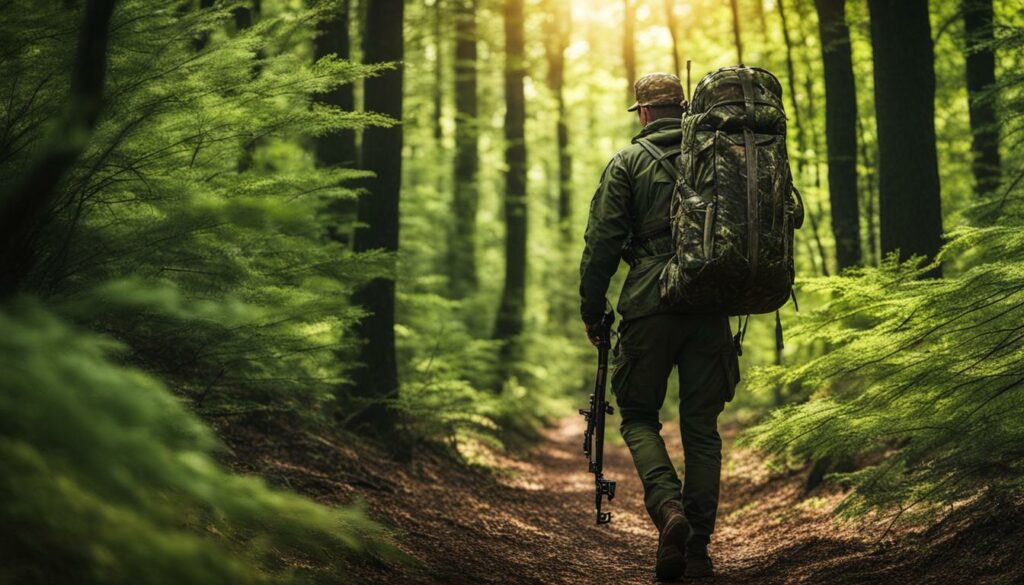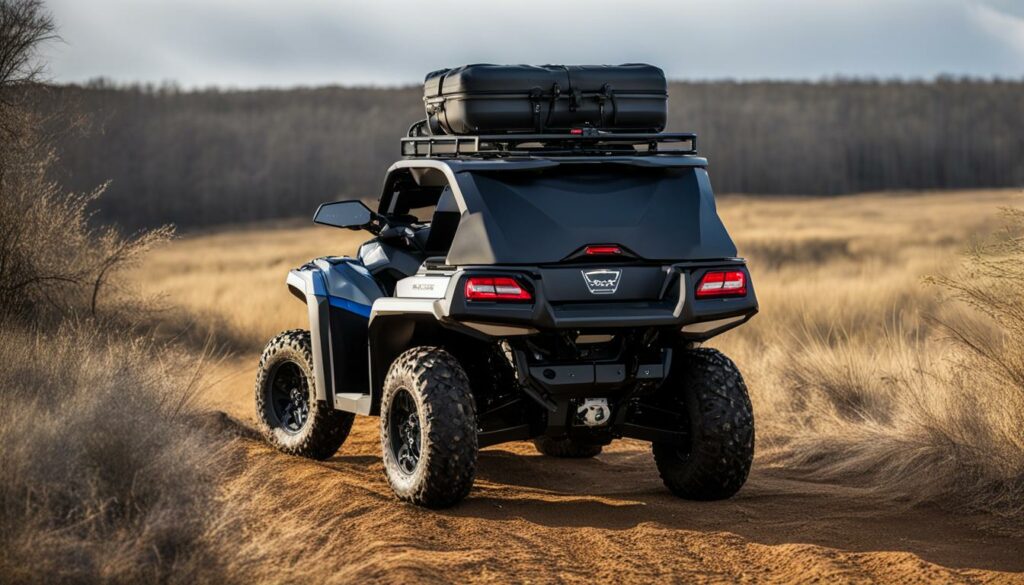Carrying a bow while hunting is crucial to ensure safety, comfort, and convenience in the field. Hunters must have the proper bow-carrying techniques and tips to navigate their hunting grounds effectively.
This article will explore various bow-carrying techniques and provide valuable tips to enhance your hunting journey. Let’s dive into the details.
Carrying a Bow in a Case
A bow case is a popular and effective way to carry a bow while hunting. A good bow case protects the bow and its accessories, preventing damage during transportation. Soft bow cases are cheaper but offer less protection compared to hard cases.
Hunters should measure their bows and accessories before purchasing a case to ensure fit. Keeping broadheads and arrows securely stored in the case, away from the bowstrings, is also essential. Airline regulations should be checked if flying with a bow case.

Comparison of Bow Case Types
| Case Type | Advantages | Disadvantages |
|---|---|---|
| Hard Case | Provides excellent protection | More expensive |
| Soft Case | Less expensive | Offers less protection |
Carrying a Bow on an ATV
Avoid carrying a bow on their lap while driving is essential for hunters who need to travel on an ATV to their hunting spot. Exceptional ATV bow cases and racks provide safe and reliable storage for bows during transportation.
Using an ATV bow case, hunters can securely store their bows and ensure they remain protected from bumps and vibrations during the ride. These cases are designed to fit perfectly on the ATV, offering a dedicated space for the bow and its accessories.
One popular option is the ATV bow rack, which allows hunters to transport their bows vertically. These racks securely hold the bow, preventing it from moving around or falling off during the journey.
It is essential to regularly check the rubber bindings of the bow racks to ensure they are in good condition and can hold the bow securely.

Transporting a bow on an ATV without proper storage can be risky, especially if hunting on public land where the ATV may be left unattended. Using a bow case or rack adds an extra layer of security, reducing the chance of loss or theft.
Furthermore, it’s essential to avoid nocking arrows while driving an ATV. This can be dangerous and increase the risk of an accident. Keeping the bow unloaded and arrows safely stored until it reach the hunting location is always best.
Carrying a Bow in a Backpack
A do-it-all hunting backpack with dedicated bow straps and pockets is convenient for carrying a bow while hunting. It provides hunters with a hands-free solution, allowing them to navigate the terrain more easily.
When choosing a backpack for bow carrying, selecting one with an external pocket and strap designed to secure the bow is recommended.
By utilizing the bow straps and pockets featured in bowhunting backpacks, hunters can ensure that their bows remain securely in place, reducing the risk of damage or discomfort during transport.
These dedicated features help to keep the bow in an accessible position, allowing for quick and easy retrieval when needed.
When strapping a bow to a backpack, it is essential to pay attention to the positioning of the bow. The bow should not hang too low after being secured, as this could cause it to hit boots or ground brush, potentially causing damage or hindering movement.
Properly securing the bow at an appropriate height will allow hunters to move comfortably and confidently throughout their hunting expeditions.
While it may be tempting to use a hunting fanny pack for bow strapping purposes, they are not recommended due to potential discomfort and limited space. Backpacks with dedicated bow-carrying options provide more comfort, storage capacity, and versatility, making them a preferred choice for bowhunters.
Carrying a Bow in Your Hands
Carrying a bow is a popular and convenient option for hunters. However, it can become awkward and uncomfortable, especially when carrying a lot of gear or navigating challenging terrain. In such cases, it is advisable to use a hunting backpack to free up both hands.
Weightlifting straps can wrap around the bow and relieve pressure on the hands. It is important not to carry the bow by the stabilizer, sight, or bow rest and to avoid using it as a hiking stick.
| Pros of Carrying a Bow in Your Hands | Cons of Carrying a Bow in Your Hands |
|---|---|
|
|
Carrying Your Bow by the String
Carrying a bow by the string is not a common method and is generally not recommended for hunting. However, carrying the bow by the cable instead of the bowstring is safer if necessary to avoid potential damage. This method should be avoided if there is any risk of the cables or strings being cut or sliced.
When combined with a string accessory sling, carrying a bow by the string may benefit target shooters.
Alternatively, a bow sling provides a popular and protective option for carrying a bow, particularly among western and turkey hunters. Bow slings make carrying the bow easier and protect it from brush damage.
Conclusion
Carrying a bow while hunting requires careful consideration to ensure safety and convenience. Hunters can choose from several proper bow-carrying methods, depending on their preferences and circumstances.
The use of bow cases, such as soft or hard cases, provides excellent protection for bows and accessories, preventing any potential damage during transportation. When traveling on an ATV, it is essential to utilize ATV bow cases and racks to securely store bows, avoiding potential accidents and ensuring a smooth ride.
For hunters who prefer a hands-free option, strapping a bow to a backpack with dedicated bow straps and pockets is convenient. This allows for easy and secure transportation, particularly when navigating challenging terrains.
A bow sling is also a popular and protective option, providing easy carrying and protecting bows from brush damage.
However, regardless of the chosen bow-carrying method, it is crucial to adhere to safety precautions. This includes avoiding carrying the bow by the stabilizer, sight, or bow rest and refraining from using it as a hiking stick.
It is also essential to regularly check the condition of the bow-carrying gear, such as rubber bindings on ATV bow racks or the tightness of straps on backpacks and bow slings.
